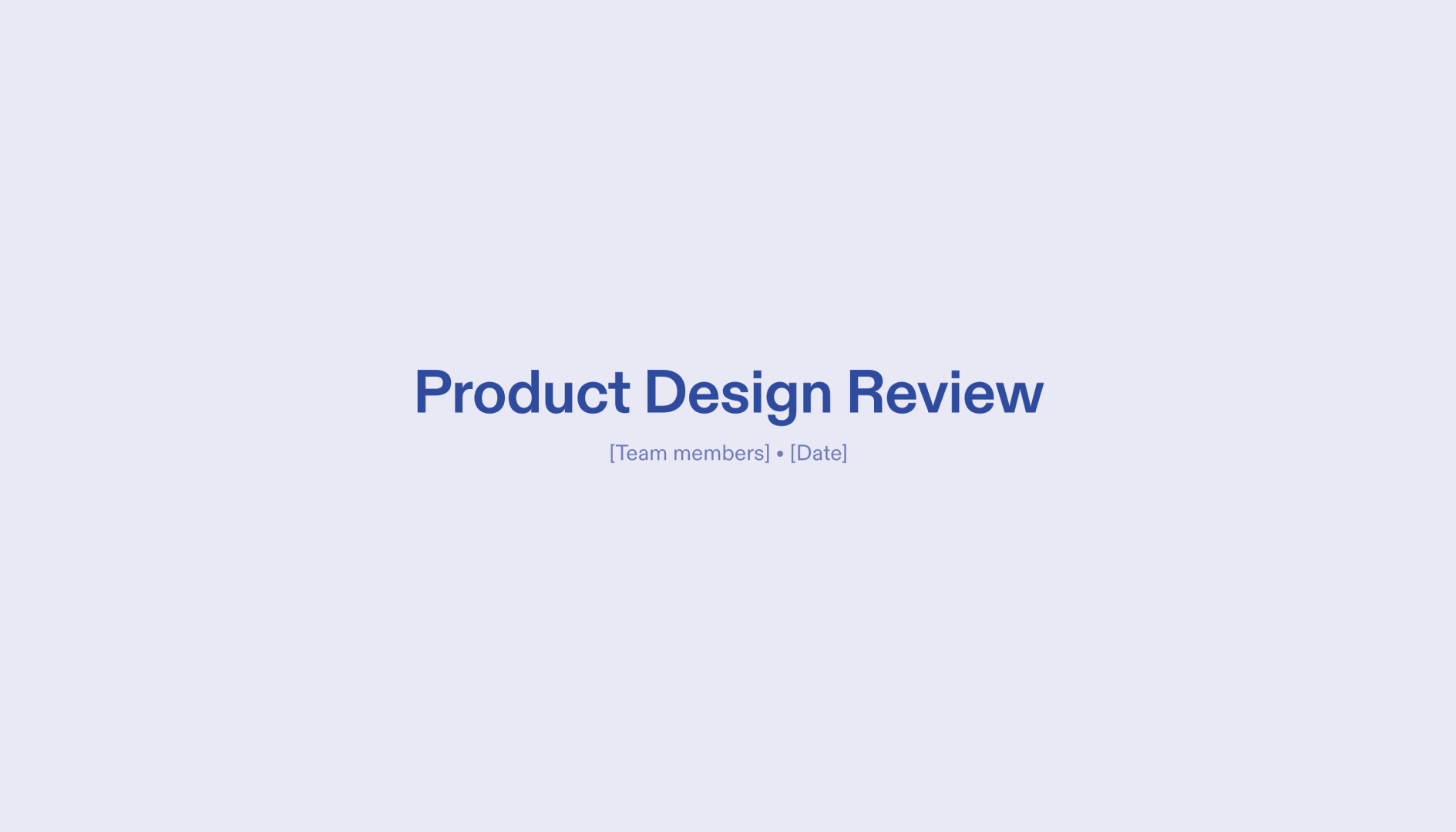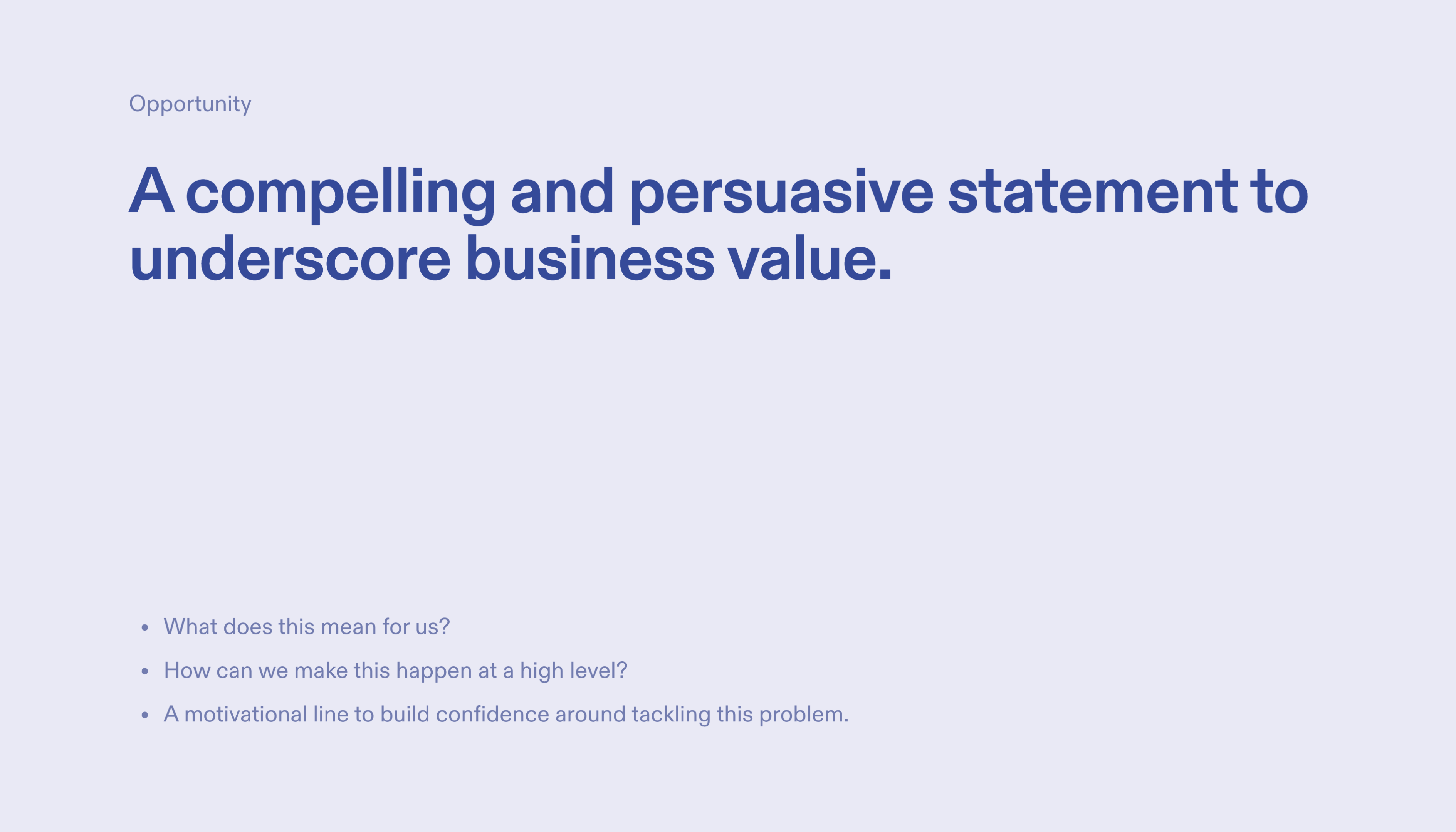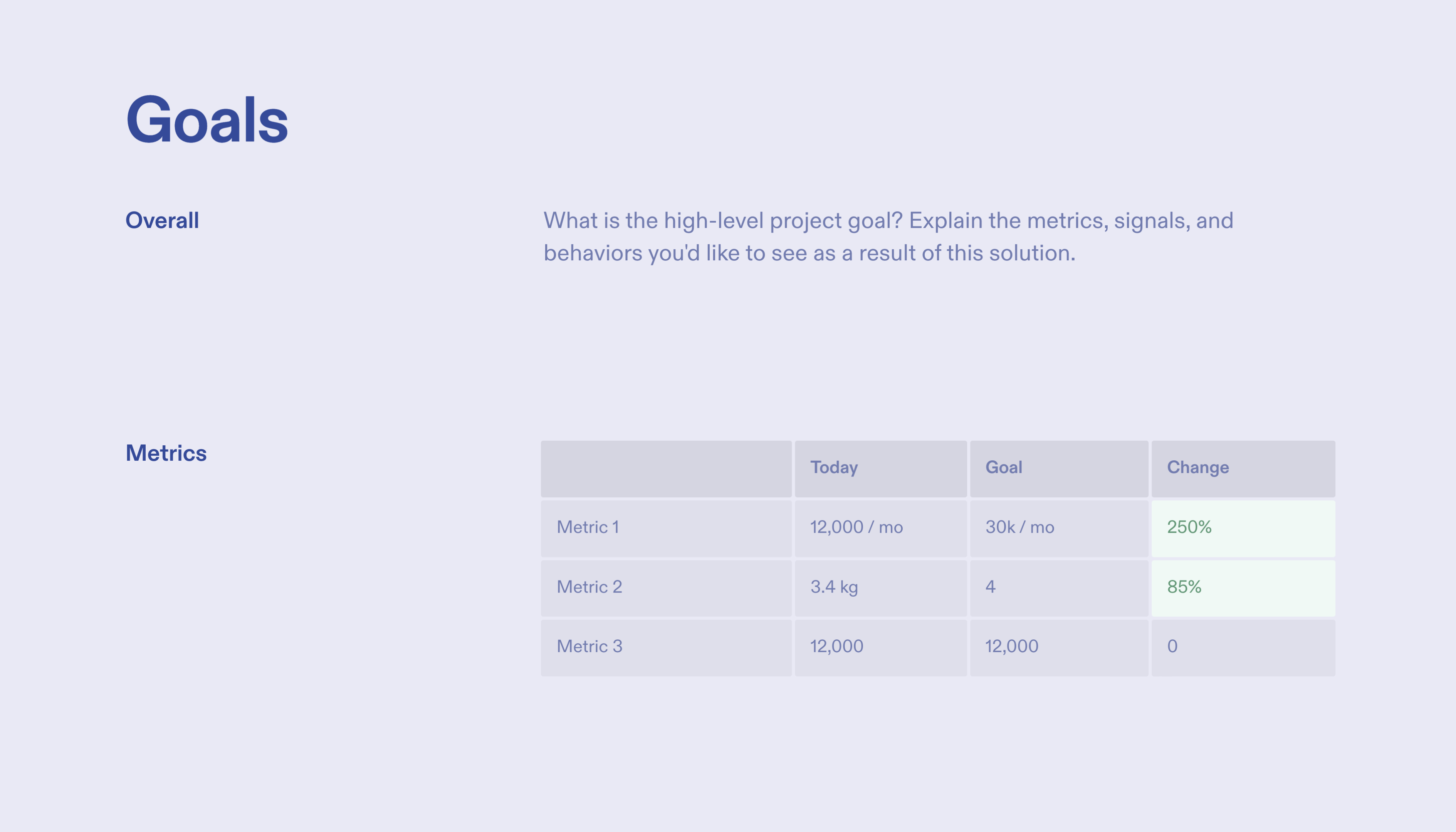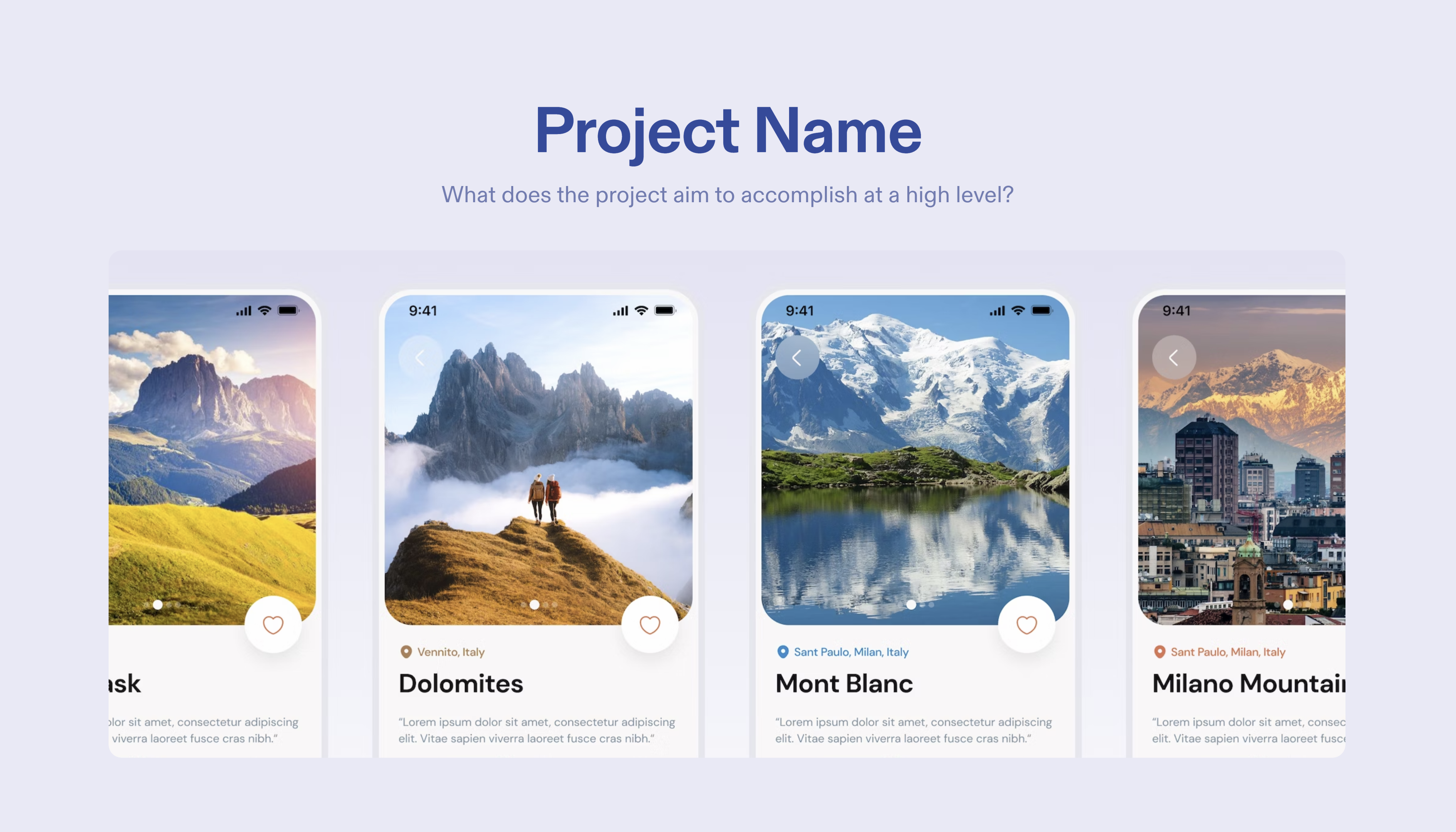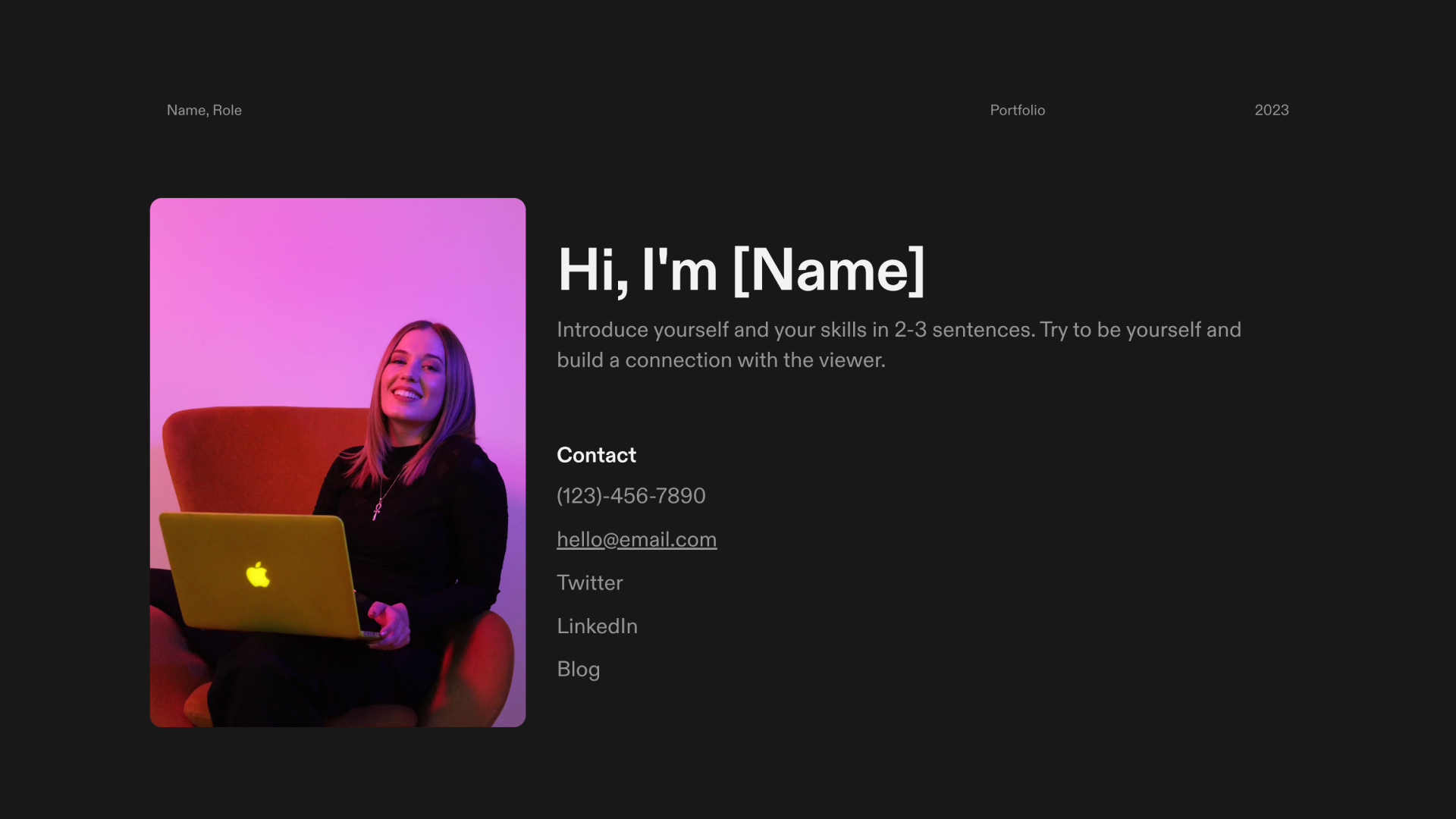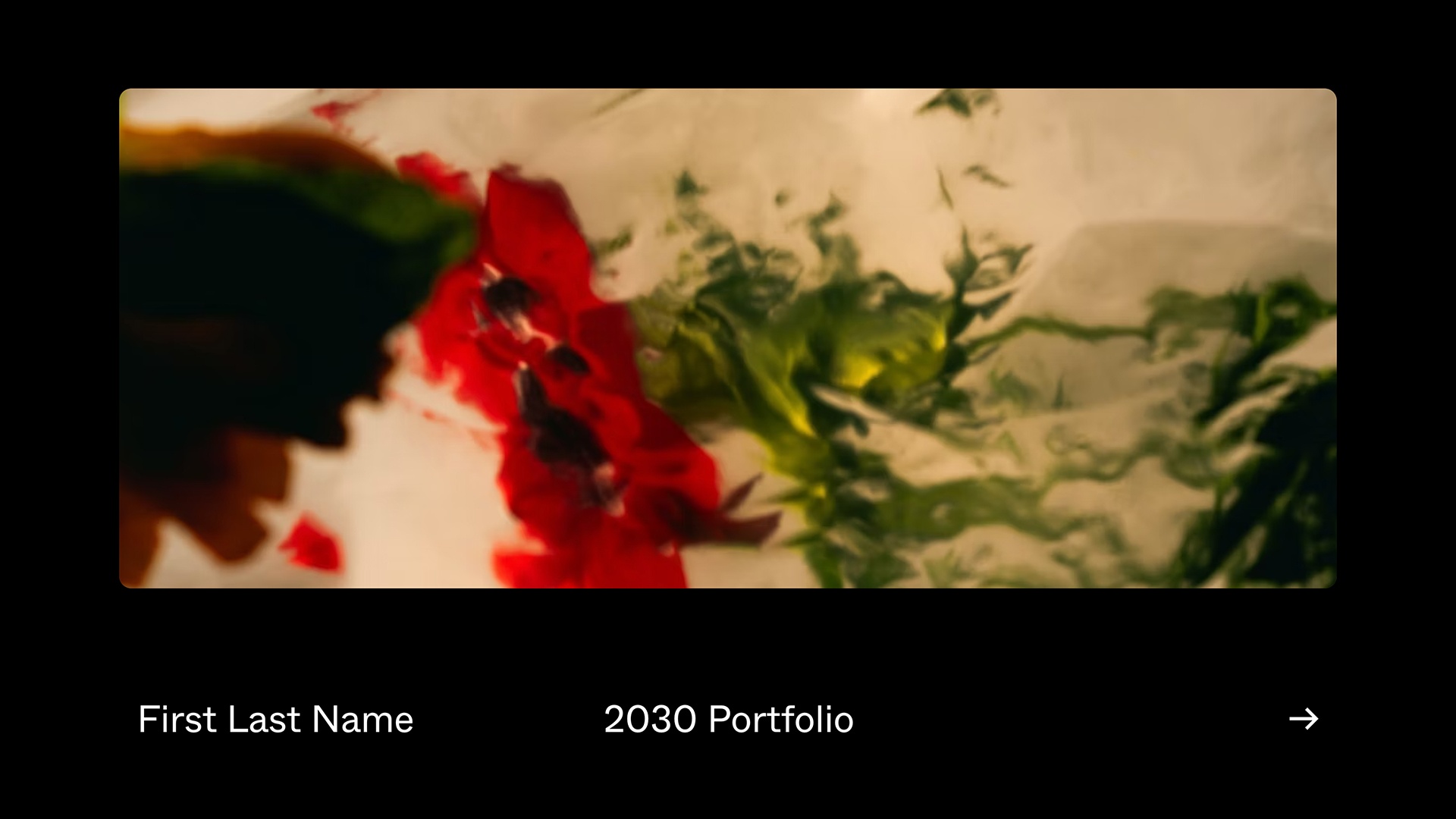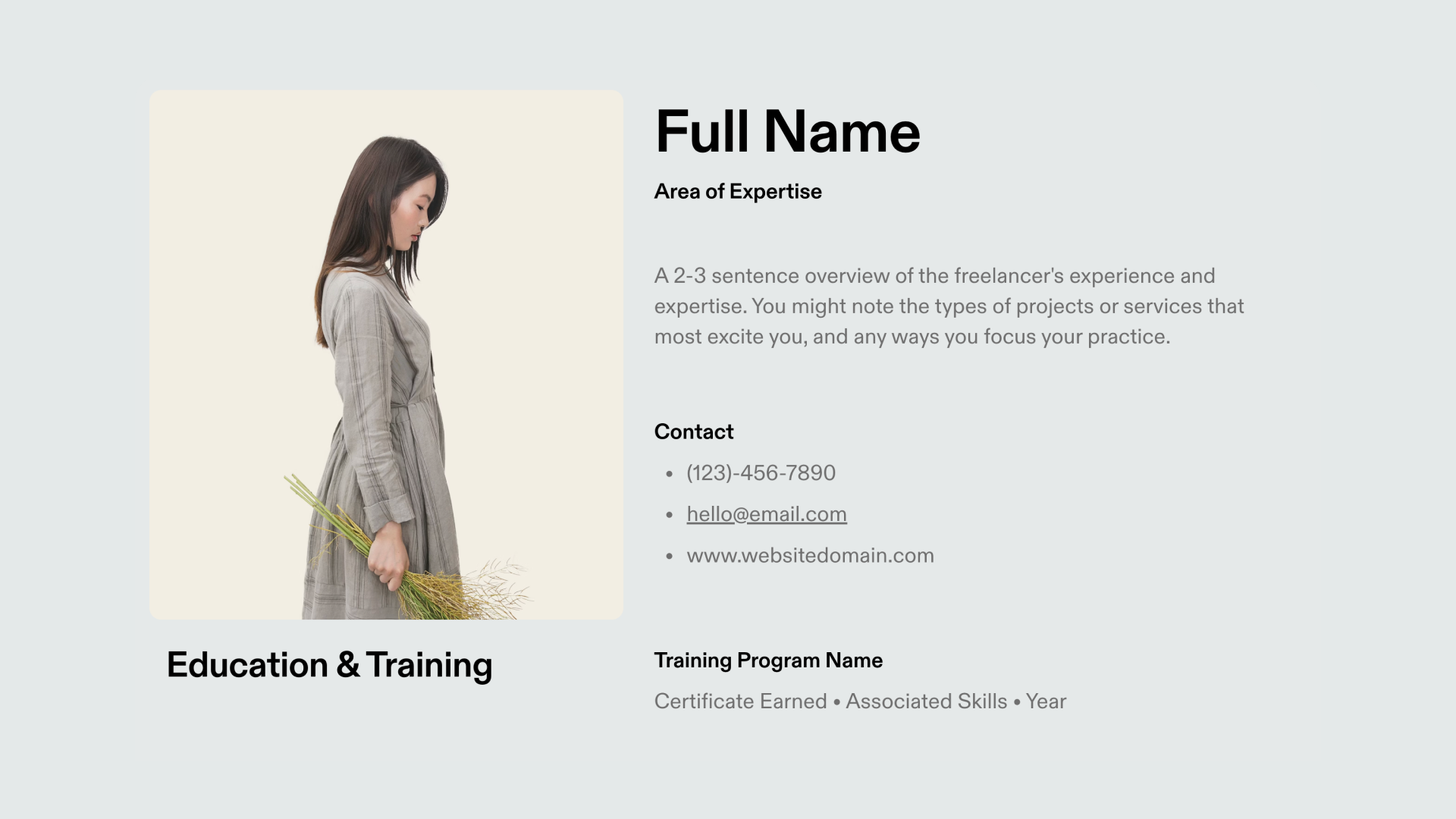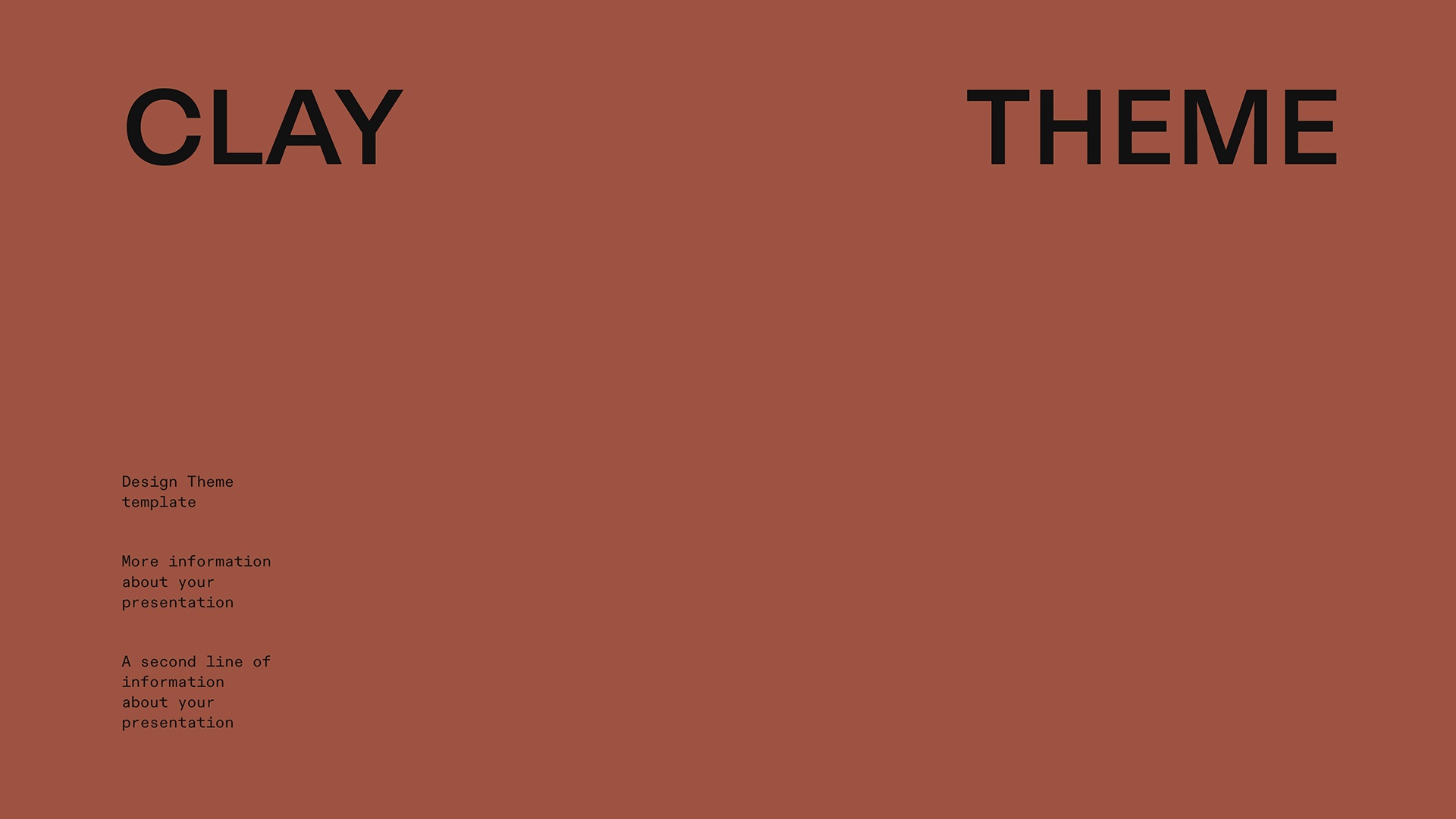Product Design Review
Stay on top of your product launch with this practical template in Tome.
About this template
Our Product Design Review template keeps your new product strategy cohesive from beginning to end. Plan your launch and review process with pages including guidelines on how to craft problem statements, feature product design, display customer testimonials, outline business goals and define the market opportunity for your product. The image and media tiles are completely editable so you can select the assets that best represent your product.
Template outline
- Problem Statement
- Social Proof
- Opportunity
- Goals
- Features
- Flow
- Implications
- Next Steps
Tell a powerful story
- Editable with AI
- Narrative Guidance
- Share or link anywhere
- Beautiful typography
- Automatic mobile layout
- Downloadable as a PDF
- AI layout generation
- AI reference sourcing
- Real-time collaboration
Expert Tips
What is a design review?
A central component in any creative process before sending your completed product out into market? Ensure that it’s been through a rigorous critical design review by key stakeholders, partners and collaborators. Not only can a proper design review catch any small missing details, fresh eyes can also point out existing gaps or inconsistencies in your design strategy that could effect the team objectives.
Let’s start from the beginning to get a holistic view of a thorough design review process. No product team knows instantly what their prototype will look like until a robust foundation has been laid. Groundwork for the design process entails thoughtful research, analysis and investigation into your customers and competitors. You won’t know what the people want until you do some digging—gather appropriate data, metrics and examples if any to help make your finished product a business success.
At a high-level, a product design review should include a problem statement, the opportunity that exists, team or company goals, features of the product, an overview of the user flow if applicable, any implications that exist and next steps for the design team and stakeholders to keep in mind prior to launch. Opportunity for revisions and shifts in strategies or design are requirements during this process. This can come in the form of distinct line items for approval sign-offs within and outside of the product design team and insights gathering techniques such as recording open-ended questions.
How do you structure a design review?
Succinct structure is crucial for a rigorous design critique and review process. Stakeholders and individual contributors alike need clear guardrails that outline the operations process in order to stay on task, stay organized and most importantly, be efficient with precious time. Any gaps or holes in the design will need to be addressed, and the faster teams can work together to come to a consensus and align on strategy, the more likely goals can be accomplished.
Let’s walk through the key elements of a product design review:
- Problem Statement. Be straightforward and concise when developing this component of a preliminary design review. It is your team’s responsibility to be efficient with stakeholders’ time and ensure that the primary motivation behind the product design matches the problem statement. If people don’t understand “the why,” then creating “the what” will be difficult. Questions to keep top of mind when writing the problem statement—What is the problem you’re trying to solve? Why is it important to the business?
- Social Proof. Whether your company is an early stage startup or publicly traded, testimonials from customers and users, are crucial drivers that add relevance and credibility. This type of social proof can be in the form of quotes, use-case scenarios or descriptive challenges that your customers are experiencing, that only your product or service can help resolve. Dedicate a page to showcasing these proof points using visuals, actual photographs of customers when possible and curate the quotes so they’re punchy and to the point. The testimonial page in Tome’s Product Design Review templates makes this easy.
- Opportunity. Expand on your problem statement and craft a compelling statement that expresses the opportunity your product seeks to fill. Be persuasive as this is the time to emphasize the unique business value that your product team brings to the table. Questions to consider as part of the critique: How does this product meaningfully move the needle for the business and for our customers? How can the product team and stakeholder make this happen both at a high level and with granularity?
- Goals. Clearly outline the objectives that this product or service aims to achieve. You can use the provided table or choose to use a media tile such as Record narration or a video tile to voice over to the team and your stakeholders how this product design review will help manage expectations. Think about goals from a birds-eye view and consider more detailed line items that the product design team may need to consider as well. Metrics, signals and solutions including expected or unanticipated behaviors you’d like to see as a result of the review process are key points to keep in mind.
- Features. Use Tome’s Figma embed tiles to display aspects of the product feature. Include thought-starter questions for the product design team such as why is this aspect of the product important to the stated goals? Leave ample space for questions, observations or areas for other parts of the feature to be visually displayed and explained by stakeholders. Think about describing key features simple and clear enough so that external partners or vendors can quickly understand what your product aims to achieve.
- Flow. There’s creative flow and then there’s user flow. This instructional page in Tome’s Product Design Review template is meant to help your product design team call out any architectural, design, structural or flow implications that your teammates or design partners may need to be aware of. You can paste in your Miro files using Tome’s embed tile feature, or use the Drawing tile to draw in shapes and diagrams that emulate user flows, timelines and more.
- Implications. During your design review meeting, loop your stakeholders and teammates in when it comes to sharing potential roadblocks, ramifications or challenges that may arise. Be transparent and clear—name each potential issue and label it. Don’t use jargon and share details about previous learnings, strategies or prototypes if applicable.
- Next Steps. Finish strong. Use a table to define teams, scope, areas for building and iterating, time frames for shipping and launching prototypes or wireframes. This part of the design process review can include identifying specific teammates and collaborators, company-wide bug bashes, brainstorming sessions and more.
What should be considered during a design review?
There are several considerations that should be top of mind when planning a product design review meeting and critique. Have a strong agenda in place. Don’t be too wordy. Ensure that your agenda hits all of the main points you need to cover when reviewing a prototype or service.
Here’s a breakdown of phases in a robust design review meeting to consider including:
- Conceptual review—Align your prototype objectives with realistic feasibility. Is this possible?
- Preliminary design review—Does this design meet performance criteria and any system requirements?
- Critical design review—Put your prototype in action with a demonstration and be transparent about apparent risks or challenges to the design.
- Production readiness review—This is the final review phase before design is locked down and execution of the product begins.
- Retrospective—Evaluate outcomes and results post implementation of the prototype or service. How did the prototype perform against benchmarks and goals? What areas can be improved or removed?
How do you run a good design review meeting?
As with any meeting, a strong product design review meeting requires planning, organization and clear communication laid out in a digestible format. Visual and engaging layouts are also key especially for a meeting in this space.
Product Design Review Team members could include:
- Product Designer
- Product Manager
- Engineering Manager
- UX/UI Designer
- Graphic Designer
- Prototyper
Tips for design review evaluations:
- Define clear objectives: Outline specific goals. This helps your stakeholders and participants focus on the most important issues and keeps people focused.
- Establish evaluation criteria: These could include aesthetics, functionality and brand identity. Ensuring your criteria gives a structured frameworks also helps focus the review process.
- Enforce constructive criticism: Creating a positive and collaborative atmosphere allows for more thoughtful feedback. When people feel safe and encouraged to share their ideas, even better outcomes for prototypes or services that positively impact your company’s bottom line is possible.
Finally, document all design critiques and share out the notes or minutes so stakeholders, internal and external partners are fully aligned.
To get started with your team’s next product design review, sign up for a free Tome account and visit the Templates page for Product managers, designers and more.
